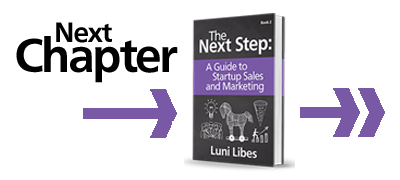A vitamin is of little use against a headache…
When you did your market research, you validated that the problem you are solving was important, and you determined how many potential customers have that problem. By talking to a dozen or more of those customers directly, you’ve determined who those customers are, what jobs they have, and a good sales channels to reach them in the long run (direct, indirect, or online).
Then, you used that knowledge to create a sales funnel for your sales efforts. That is, you figured out which potential customers are likely to actually buy your product. And you’ve now given some thought to organizing the sales team to go sell to these customers.
With all that research and reflection, you should now have an understanding of the complexity of your sales process. But there is one more important factor that you may have overlooked.
How important is this problem to your customer?
Is this a problem he or she faces on a daily basis? Is it costing him money? It is wasting her time?
What about all the other problems your customer is dealing with? Is this the most important problem? Second most important? Third? Or tenth?
Ultimately, when you go to make a sale, you are not only competing with other products that solve the same problem, you are also competing for attention with all the other problems your customers are dealing with.
Thus, you are unlikely to close any sale until your product/service solves one of the top three problems your customers have right now.
This priority will affect the average amount of time it takes to close a sale and the number of times you’ll need to talk to a customer before that sale closes.
Drop by any pharmacy to see this effect. Aspirin and other pain killers sell far more often and in greater quantities than vitamins.
Ask yourself, is your product an aspirin or a vitamin?
I have experienced this effect personally at my own startups. Back in the 1990s, at my first startup, a giant consumer electronics company called us up with a problem. The salespeople in the electronics stores knew nothing about the new “personal digital assistant” they were selling (what today we’d call a tablet). They needed an app that would run on the devices in the stores, demonstrating the features directly, without any salesperson. That problem was such a high priority that we closed that sale on the first incoming call.
Fifteen years later, in the early 2000s, at my fifth startup, we created a product that we estimated would allow the wireless carriers to earn tens of millions of dollars. We sold this as a “freemium” product, making it free to purchase. Between the high value and zero price, I expected to shrink the average sale time from years to months. Instead, what I learned was that each of these giant companies had dozens of other problems they were solving, and, at best, our solution was ranked fifth or sixth. Due to that competition, the average sales effort took between nine and twenty-four months.











